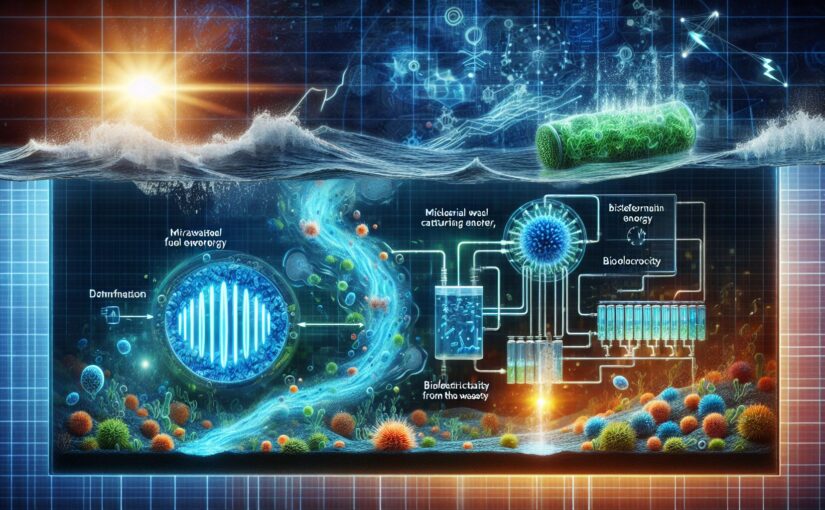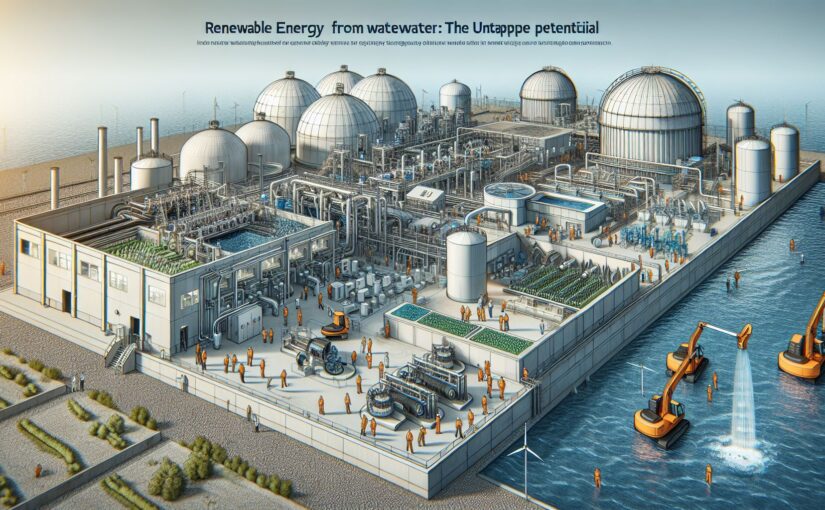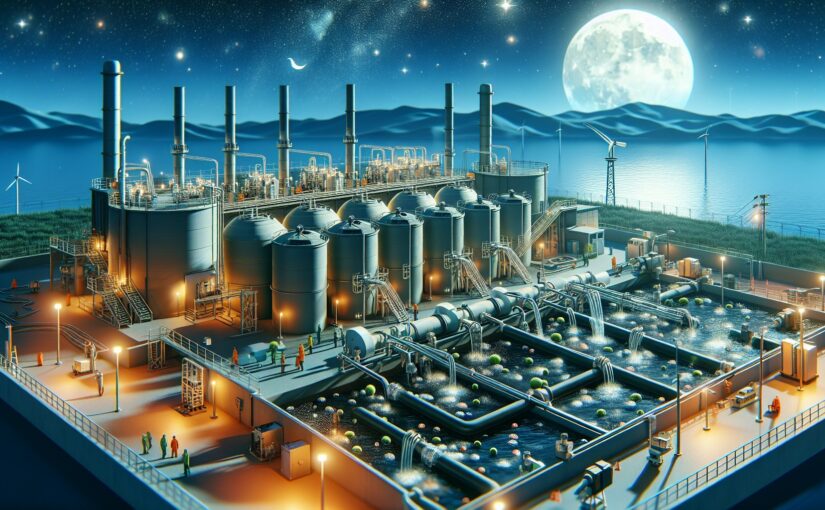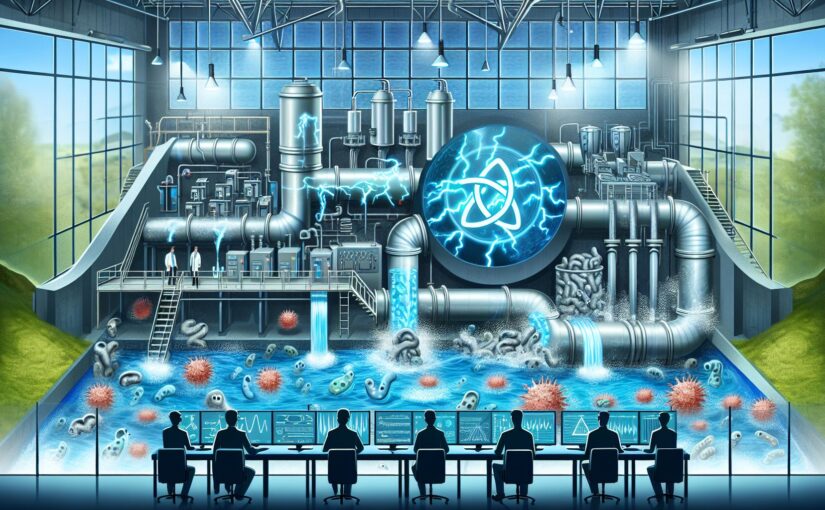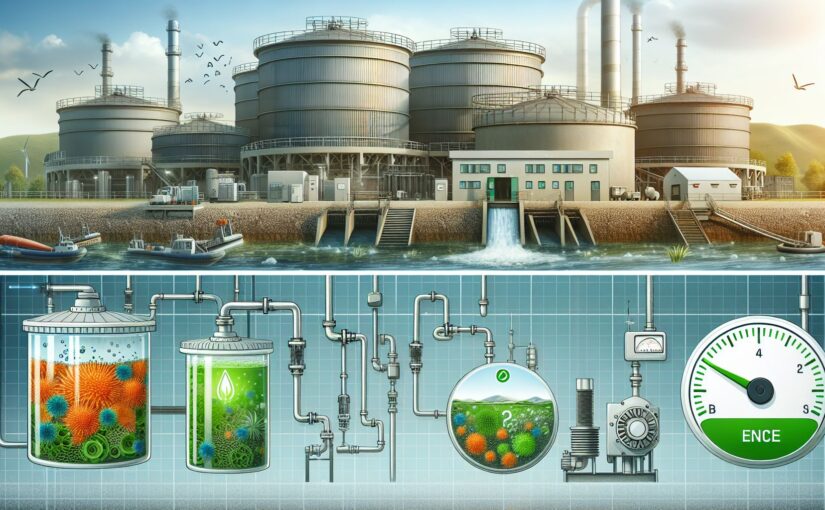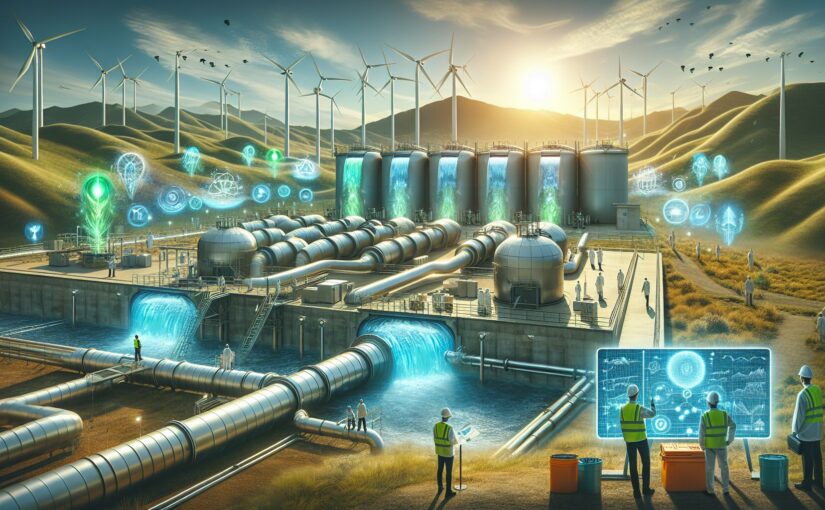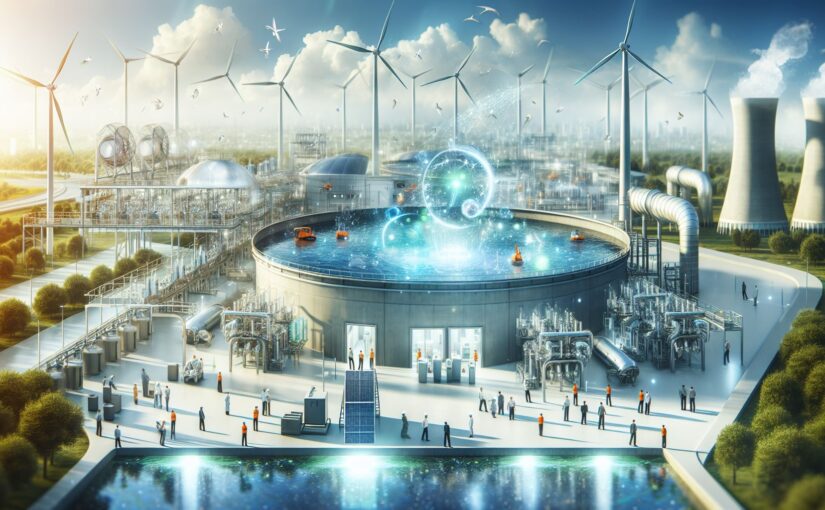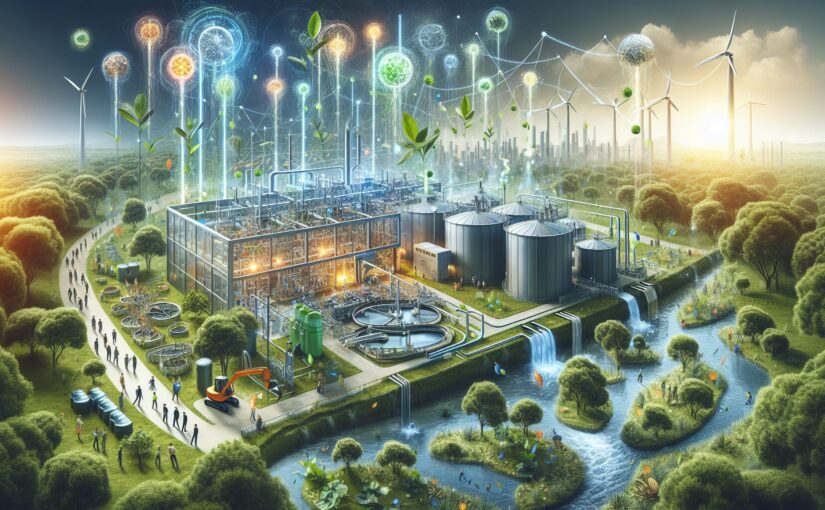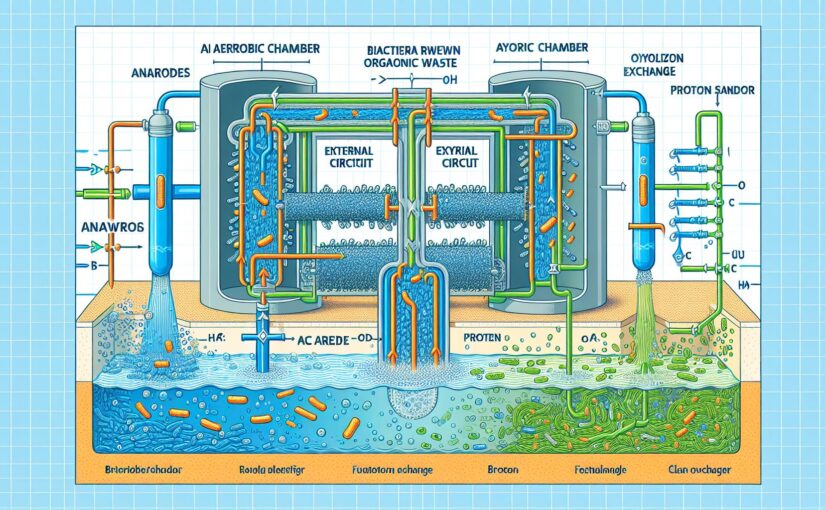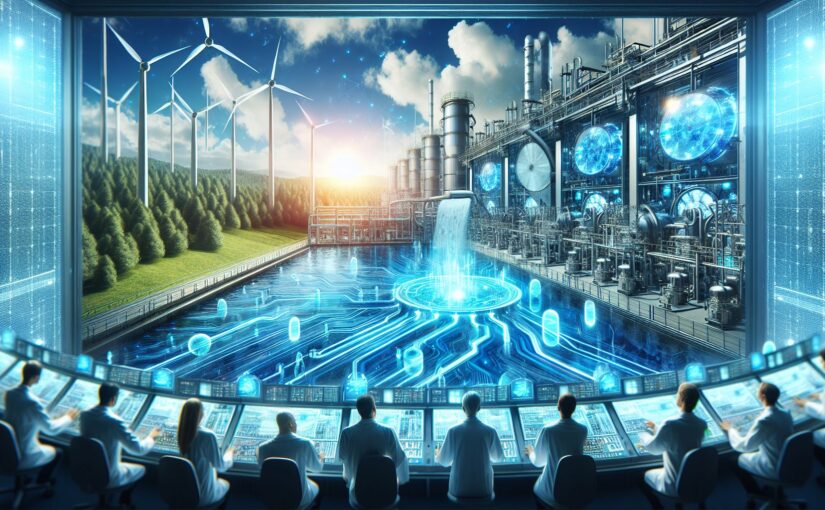As the world seeks sustainable and clean energy sources, wastewater emerges not just as a byproduct of our modern lifestyle but also as a potential goldmine for renewable energy. Microbial Fuel Cells (MFCs) for wastewater treatment have garnered significant attention due to their ability to treat wastewater while simultaneously generating bioelectricity. This untapped resource could revolutionize how we handle waste and produce energy, synergizing environmental cleanliness with energy recovery.
Introduction to Wastewater as a Renewable Energy Source
Traditionally, wastewater treatment consumes high energy levels, primarily powered by non-renewable resources. However, the discovery of certain microorganisms capable of converting organic matter directly into electricity has opened a new horizon for renewable energy.
Microbial Fuel Cells (MFCs) are devices that utilize the metabolic processes of bacteria to convert organic compounds into electrical energy. In these systems, bacteria act as natural biocatalysts, breaking down organic matter in the wastewater and simultaneously producing electrons, which can be harnessed as an electrical current.
The Mechanism of Microbial Fuel Cells
An MFC consists of two compartments: the anode and the cathode, separated by a proton exchange membrane. The anode compartment contains electroactive bacteria which consume organic substrates from the wastewater, releasing electrons and protons as waste products in the process. The electrons are captured by the anode and travel through an external circuit to the cathode, creating an electrical current. Protons pass through the proton exchange membrane to the cathode, where they combine with electrons and oxygen to form water.
Electroactive Wastewater Bacteria: The Power Producers
Certain bacteria found in wastewater, known as electroactive bacteria, have the unique ability to transfer electrons outside their cells. These include Shewanella putrefaciens and Geobacter sulfurreducens, among others. These bacteria are key to MFCs as they directly interact with the electrodes to facilitate electron transfer, eliminating the need for mediator chemicals. This process is known as extracellular electron transfer.
Benefits of Using MFCs for Wastewater Treatment
- Dual-functionality: MFCs treat wastewater while producing electricity.
- Sustainability: This technology exploits renewable organic matter and operates at ambient conditions.
- Reduced Sludge Production: MFCs produce less sludge compared to conventional treatment processes.
- Low Operational Costs: Once established, MFCs require minimal energy input.
- Carbon Neutrality: The process can help reduce the carbon footprint of wastewater treatment facilities.
Bioelectricity Generation from Wastewater
The organic content of wastewater is an excellent fuel for MFCs as it’s abundant and continually produced. The concept of utilizing this organic matter to generate bioelectricity has several practical implications:
- Powering Sensors: MFCs can power remote sensors in wastewater treatment plants, reducing the energy costs attributed to monitoring.
- Direct Power Supply: While currently at a smaller scale, MFC-generated electricity can power lights and small devices within the treatment facilities.
- Research and Education: Small-scale MFCs serve as educational tools that illustrate the intersections of biology and technology.
Enhancing Power Generation in MFCs
Electrode Materials for MFCs
One hindrance to the widespread application of MFCs is their relatively low power output. The efficiency of these systems is strongly influenced by the materials used for electrodes. Carbon-based electrodes, like carbon cloth and graphite rods, are well-known for their bio-compatibility, conductivity, and durability. Researchers have also experimented with catalyst-coated electrodes to increase the conductivity and electron transfer rate.
Architecture and Design Innovations
The design of MFCs, including scaled-up versions and stacked configurations, aims to improve power density and treat larger wastewater volumes. Continuous flow MFCs optimize substrate availability and waste removal, leading to more consistent performance. Innovative designs like sediment MFCs leverage natural ecosystems, such as riverbeds and seabeds, effectively turning them into massive, natural MFCs.
Challenges and Future Directions
Despite the promise of MFCs in renewable energy production and wastewater treatment, several challenges remain:
- Scaling Up: Transferring laboratory-scale successes to full-scale, practical applications is complex and requires significant investment.
- Electricity Harvesting Efficiency: The power output needs to be improved to make MFCs economically viable.
- Materials Cost: Finding cost-effective, conductive materials is essential for practical deployment.
- Understanding Microbial Communities: More research is needed to optimize the microbial consortia in MFCs for maximum efficiency.
Conclusion: The Potential of MFCs for Renewable Energy
MFC technology represents a bridge between sustainability and innovation. By turning wastewater treatment plants into renewable energy generators, society could address both environmental pollution and clean energy demands. Although challenges remain, ongoing research and development promise to enhance MFC efficiency and feasibility, paving the way for an energy-savere future fueled partially by the very waste we strive to manage.
Sources
- Logan, B. E. (2008). Microbial Fuel Cells. John Wiley & Sons, Inc. – https://doi.org/10.1002/9780470387717
- Pant, D., Van Bogaert, G., Diels, L., & Vanbroekhoven, K. (2010). A review of the substrates used in microbial fuel cells (MFCs) for sustainable energy production. Bioresource Technology, 101(6), 1533–1543. – https://www.sciencedirect.com/science/article/pii/S0960852409010663
- He, Z., Minteer, S. D., & Angenent, L. T. (2005). Electricity generation from artificial wastewater using an upflow microbial fuel cell. Environmental Science & Technology, 39(14), 5262–5267. – https://pubs.acs.org/doi/abs/10.1021/es0502876
This article was crafted to introduce the technology and concepts around microbial fuel cells, specifically for wastewater treatment and energy production, pulling together knowledge from academic and industrial research.
